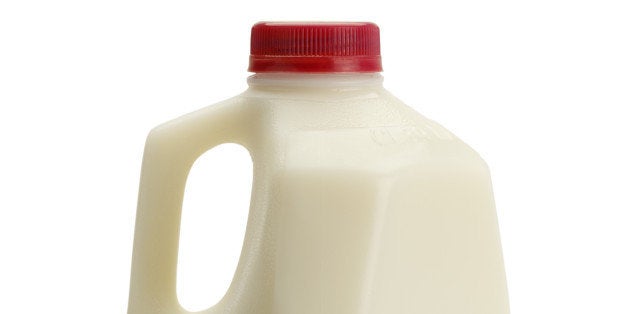
You've heard the terms before, but do you really know what "pasteurized" and "homogenized" mean when it comes to milk? The processes are critical to both your safety and your taste buds, but are dramatically different. Having just examined the pros and cons of raw milk, we think nothing could be more important than understanding our food and knowing exactly how it gets to our table. With the amount of dairy we've consumed in our lifetime, we believe it's high time we all understood what goes into our milk.
So what's the difference and why should we care? Put simply, pasteurization is intended to make milk safer and government agencies claim it doesn't reduce nutritional value, while raw milk enthusiasts disagree. Homogenization isn't meant for safety, but for rather for consistency and taste.
Pasteurization is the process of heating milk up and then quickly cooling it down to eliminate certain bacteria. For effective pasteurization, milk can be heated up to 145 degrees Fahrenheit for 30 minutes, but this method isn't very common. More common is heating milk up to at least 161.6 degrees Fahrenheit for 15 seconds, which is known as High-temperature Short-Time (HTST) pasteurization, or flash pasteurization. This method will keep milk fresh for two to three weeks. Then there's Ultra-Heat Treatment (UHT), whereby milk is heated to 280 degrees Fahrenheit for a minimum of two seconds. This processing results in a shelf life that can extend up to nine months. Milk treated with pasteurization or HTST is labeled as "pasteurized," while milk treated with UHT is labeled as "ultra-pasteurized."
Pasteurization does not kill all micro-organisms in milk, but is intended to kill some bacteria and make some enzymes inactive. While raw milk activists claim otherwise, the FDA and the Centers for Disease Control and Prevention (CDC) states that "pasteurization does not reduce milk's nutritional value." While the CDC acknowledges that pasteurization inactivates certain enzymes and reduces certain vitamins like Vitamin C, it argues that "milk is not a major source of Vitamin C" in the U.S. diet.
Raw milk enthusiasts, on the other hand, tout Vitamin C as a benefit of unpasteurized milk, which they claim is more nutritious and contains no additives. The FDA and CDC warn against the dangers of unpasteurized milk and in some states, selling it directly to consumers is illegal. Other states allow the sale of unpasteurized milk directly to consumers, but could have strict laws for distributing the item across states lines.
Homogenization is an entirely separate process that occurs after pasteurization in most cases. The purpose of homogenization is to break down fat molecules in milk so that they resist separation. Without homogenization, fat molecules in milk will rise to the top and form a layer of cream. Homogenizing milk prevents this separation from occurring by breaking the molecules down to such a small size that they remain suspended evenly throughout the milk instead of rising to the top.
Homogenization is a mechanical process and doesn't involved any additives. Like pasteurization, arguments exist for and against it. It's advantageous for large-scale dairy farms to homogenize milk because the process allows them to mix milk from different herds without issue. By preventing cream from rising to the top, homogenization also leads to a longer shelf life of milk that will be most attractive to consumers who favor milk without the cream layer. This allows large farms to ship greater distances and do business with more retailers. Finally, homogenization makes it easier for dairies to filtrate out the fat and create two percent, one percent and skim milk. WiseGeek explains that while it is also possible to achieve these different fat contents by skimming cream from the top, homogenization makes the process more precise. Some people worry, however, that by reducing the size of fat molecules, homogenization makes fat easier to absorb. Studies remain inconclusive on that matter, however.
While it is possible to have pasteurized milk that hasn't been homogenized and homogenized milk that hasn't been pasteurized, most milk found in U.S. supermarkets have undergone both processes. If they are to occur together, milk is typically pasteurized first and then homogenized, because the heat from pasteurization makes fat molecules easier to break down for homogenization.
Got all that? We need an Oreo.